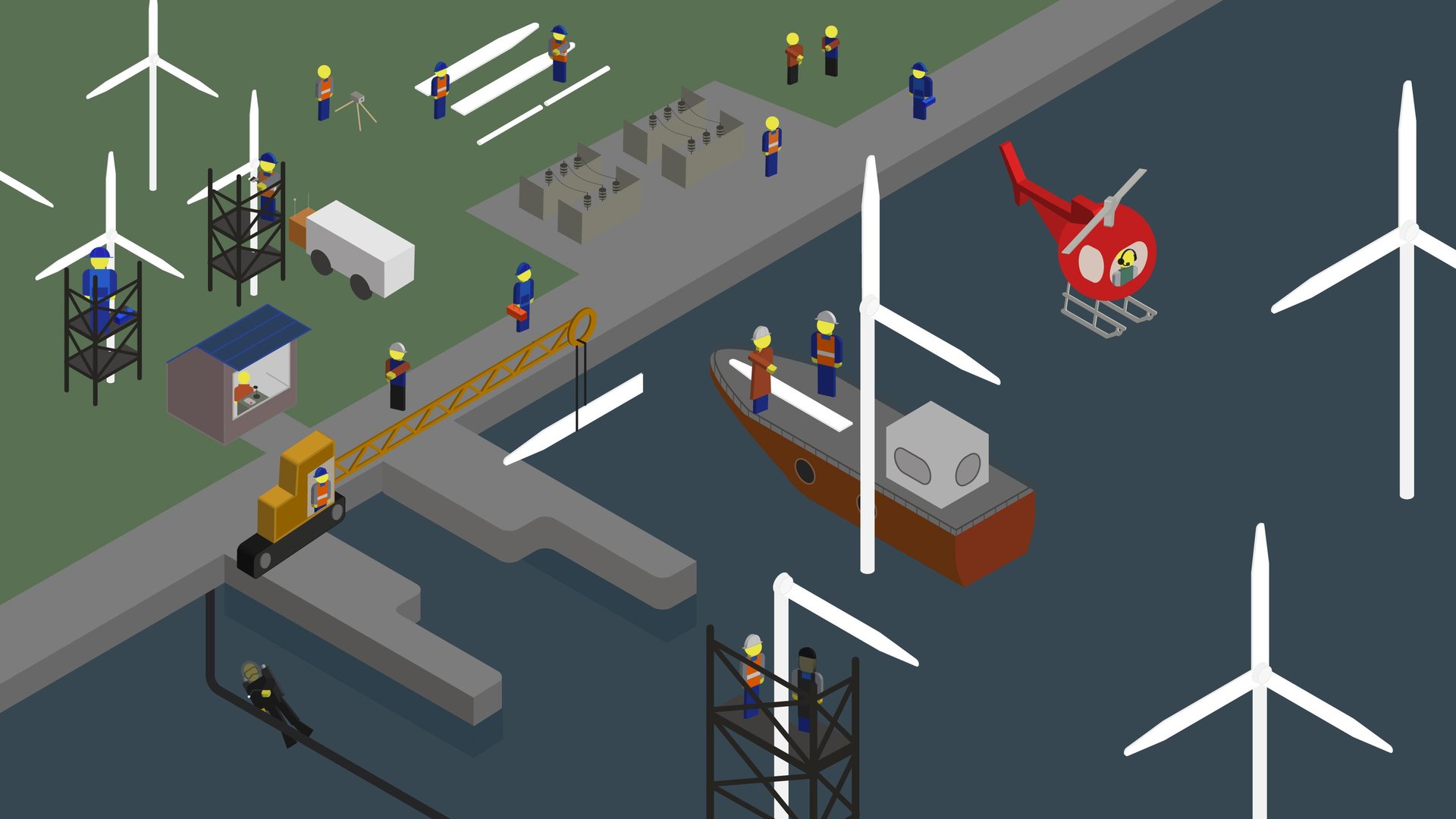The US East Coast is set to become a green energy job powerhouse
To address global warming the White House has stated that president Biden’s green energy plan aims to set the US on a course toward achieving “net-zero” greenhouse gas emissions by 2050. If achieved, it would mean the country that currently ranks as the world’s worst historical climate polluter would stop adding new climate pollution to the atmosphere. All of the pathways for achieving this goal imagined under Princeton University’s Net Zero America project show enormous ramp-ups of electricity generated from wind turbines during the coming 30 years.


To address global warming the White House has stated that president Biden’s green energy plan aims to set the US on a course toward achieving “net-zero” greenhouse gas emissions by 2050. If achieved, it would mean the country that currently ranks as the world’s worst historical climate polluter would stop adding new climate pollution to the atmosphere. All of the pathways for achieving this goal imagined under Princeton University’s Net Zero America project show enormous ramp-ups of electricity generated from wind turbines during the coming 30 years.
Where is offshore wind green energy expected to be located in the US?
The turbines would be clustered on wind farms off the coasts and embedded among agricultural operations. They’ll be far enough from cities to protect urban residents from noise and strobe-like flickering caused by blades’ shadows, but close enough for the power to be economically delivered through electrical transmission lines. A Climate Central analysis of the Net Zero America data suggests that if the net zero goal is achieved, wind farms in Texas, Missouri, Iowa, and Illinois could each have more capacity installed by 2050 than the 118 gigawatts of wind capacity currently operational in the US.
A fresh push by developers, newfound federal support for offshore wind energy under president Biden, and long-running efforts by states to drive up green energy production mean the US’s East Coast is poised for a rush of approvals of sweeping arrays of turbines fixed to towers driven into the Atlantic’s floor. Future booms are also possible along the Gulf of Mexico, in the Great Lakes, and off the West Coast. Turbines operating in deep Pacific and Gulf of Maine waters would need to be installed on floating platforms. Some of that technology is being adapted from gas and oil drilling operations, but so far floating deployments have been very limited worldwide.
The green energy jobs created by building offshore wind farms
A boom in offshore wind development has the potential to rejuvenate working waterfronts and ports with green energy jobs. Shipbuilding yards will be needed to manufacture vessels able to install and service the turbines and associated coastal facilities.
Building and maintaining all of the solar farms, wind farms, transmission lines and, other infrastructure needed to reach net zero emissions nationally by 2050 will require a lot of workers, helping to put former employees from fossil fuel and, other fading sectors to work. The Net Zero America data show a continued rise in employment in the solar energy sector. They forecasted the greatest growth of wind energy jobs, however, to begin a decade from now.
“Offshore wind is a once-in-a-generation economic opportunity to build a new industry,” said Ross Gould, the supply chain development vice president at the Business Network for Offshore Wind, a group that’s working to identify and help meet the future workforce and supply needs of offshore wind projects in the US. “Currently we’re seeing a boom in project management and project development jobs up and down the East Coast as the projects are beginning to move further along in their studying and assessment work.”
When wind energy generation rose to more than 8% of America’s utility-scale electricity production in 2020, it was more than 50 times higher than production in 2000, US Energy Information Administration data show. Almost all of this development was in rural areas, with much of the power being delivered through transmission lines into nearby metro areas.
Wind farms benefit farmers, governments, and job seekers.
The growth is providing new lease and tax revenues for farmers and local governments. It is also bringing job training for a growing army of maintenance workers known as wind energy technicians. The skills are being taught by hundreds of community colleges and other training institutions nationwide. “Our placement is incredible,” said Andrew Swapp, director of the wind energy technology course at Mesalands Community College in New Mexico. “If a person really wants to go to work, they’re going to get a job.”
Offshore wind farming has been booming in Europe for decades and more recently across parts of Asia. The US has been falling behind when it comes to generating wind power at sea. There is just one small offshore wind farm operating on US waters. It’s off the coast of Rhode Island. Industry insiders blame a reluctance by Americans to act on climate change and lack of federal leadership in permitting and pushing for more offshore wind projects.
“We’re a late-comer,” said Chris Wissemann, chief executive of wind energy developer Diamond Offshore Wind, who said the reason has been “literally climate denial.” But oceans are reliably blustery places. Calculations by the nonprofit Environment America indicate that offshore wind farms could provide almost all of the power Americans need by 2050. That means keeping the lights, heaters, and air conditioners on and fueling a nation’s worth of electrified cars, trucks, and transit systems, all from coastal wind farms.
This story was produced through a collaboration with Climate Central, a non-advocacy science and news group.